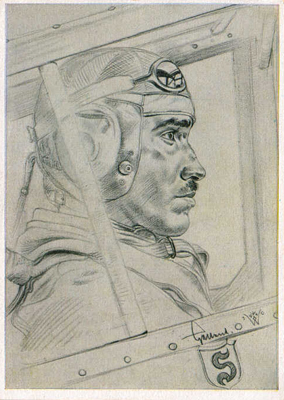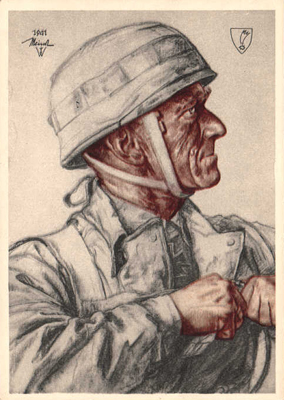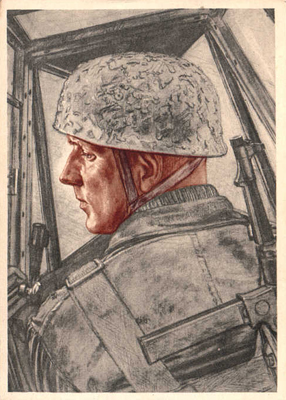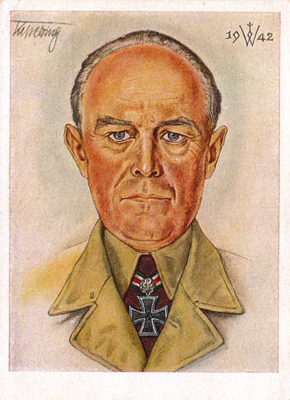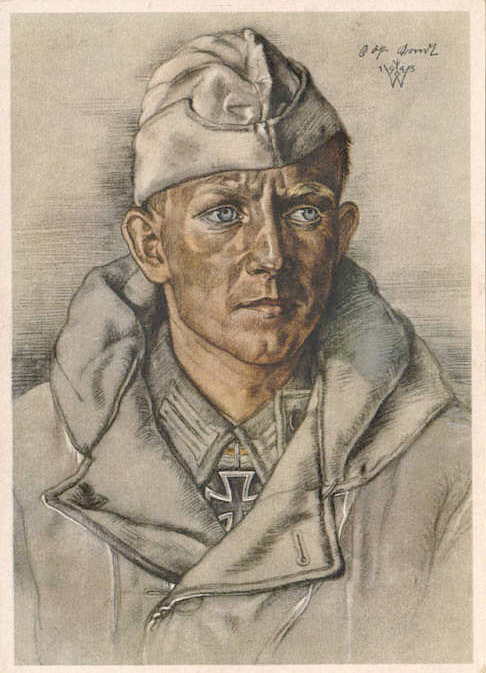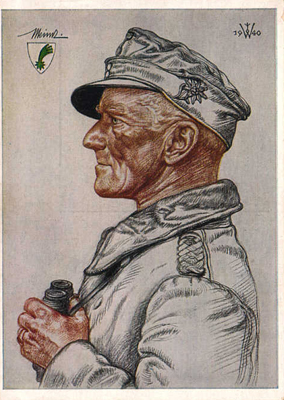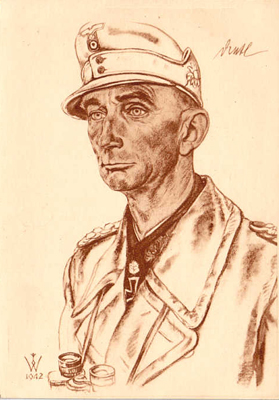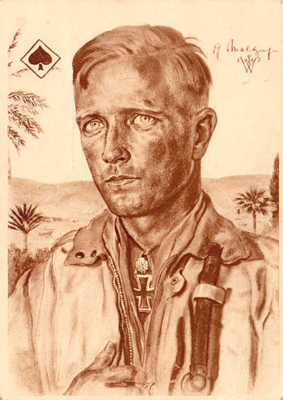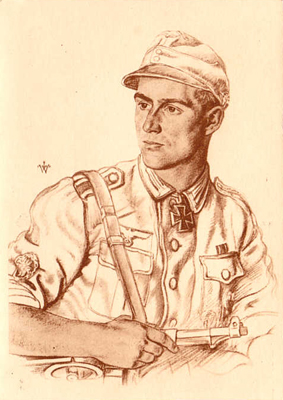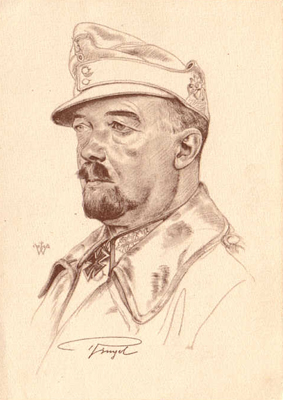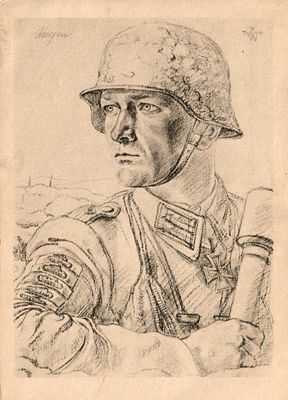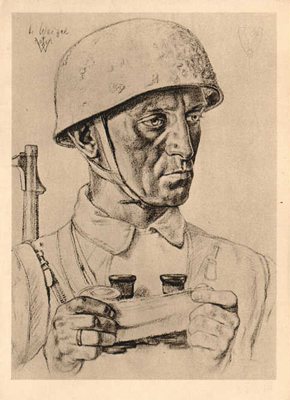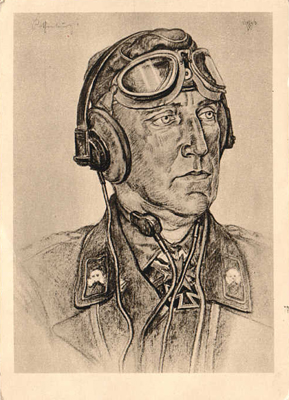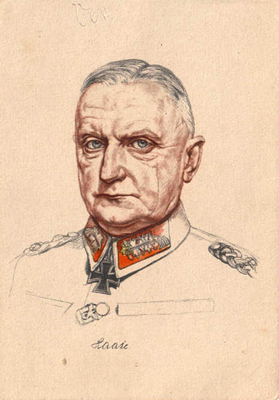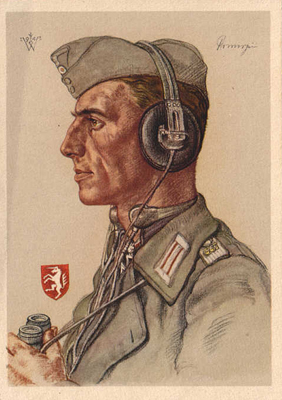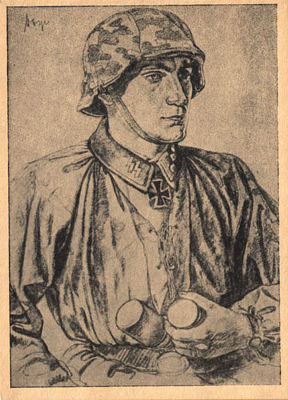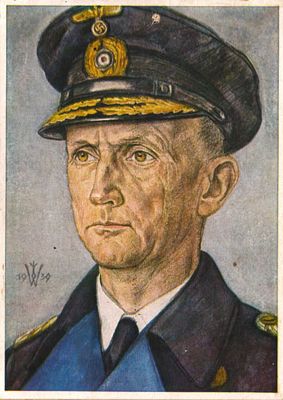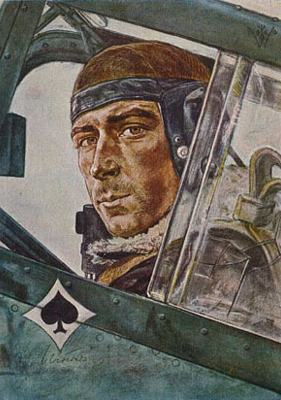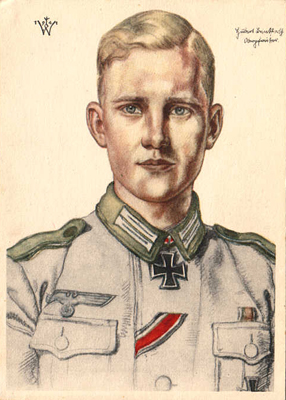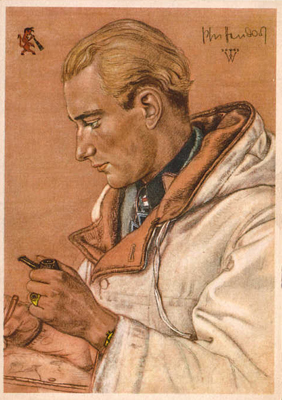Wolfgang Willrich
31st March 1897 - 18th October 1948
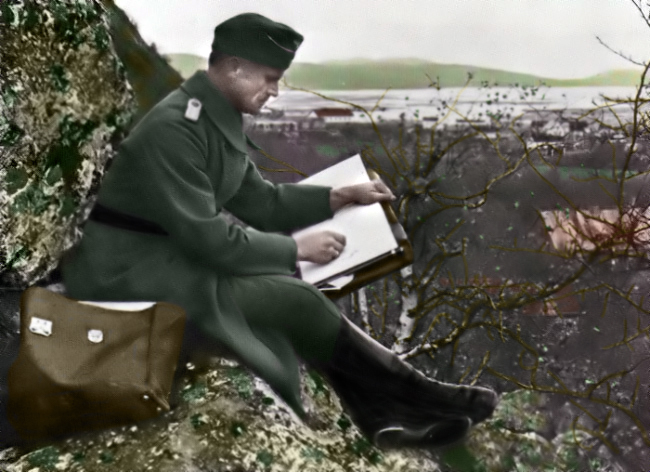
Born in Goettingen on 31st March, 1897, Wolfgang Willrich came from a long line of farmer stock from Lower Saxony and Pomerania. His father, the Hellenist Hugo Willrich, taught classical philology at the University of Goettingen and had several preachers as ancestors.
Wolfgang evidenced artistic talent at an early age and absorbed so much of his father's ancient andrenaissance ideals that schoolmates nicknamed him "The Ancient One". In 1915 he went to the College of Art in Berlin, where he found the artistic trends decadent. During that time he also worked with the Youth Movement.
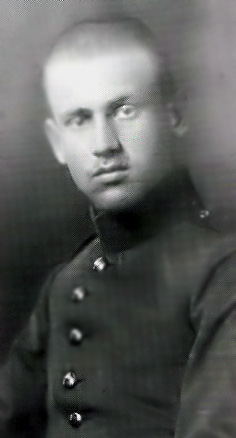
In 1916 he was called up as a Feldwebel in the 251st Infantry Regiment, and received the Iron Cross while in action on the Western Front. He was taken prisoner there by the French and interned in Orleans. During his captivity he made numerous drawings and sketches. He made public his first drawings in a magazine for prisoners of war published by the International Red Cross. Released from captivity in 1920, he resumed his studies at the Dresden Academy, where he wasthe pupil of Richard Mueller and Georg Luehring for four years. In addition, he studied biology and anthropology and attended lectures by the famous anatomy teacher Hermann Dittrich, whose master student he became.
He joined the Tannenberg association led by General Field Marshal von Ludendorff and his wife Mathilde, but left the group because of differences with Mrs. Ludendorff. (But he nevertheless published in the Tannenberg Illustrated Journal in 1932 and 1934).
He visited Holland, Belgium, France, and Switzerland to study masterpieces of the past and how they were created. Not only did Willrich distinguish himself during this time by drawing portraits of Ludendorff (1927) and General Lettow-Vorbeck (1929), he excelled at portraying the Nordic component of the German people during a time when modern artists of every ilk were adherents of racial consciousness in their work. He varied his style during this formative period, and experimented with various media, including charcoal, chalk, and graphite.
In 1933-34 Willrich was active at the Reich Ministry of Culture, but was forced out of his position because of his affiliation with the Ludendorff movement. He taught several months at a private school in Dresden, and then settled down in Berlin, where R. Walter Darré gave him a position as an independent employee. He was paid 500 marks a month so that he could portray Nordic type country folk in the South and North of Germany. He carried out this work with enthusiasm, but ran up against negative resistance from local Group Leaders of the NSDAP, especially in Bavaria. (In a letter of the first of November, 1936, he complained about the resistance of Munich anthropologist Merkenschlager to the Nordic idea, among other things).
Under the direction of Walter Gross he drew more ethnic portraits, according to the wishes of the Racial Politics Office of the Nazi Party.
His drawings that appeared as posters also were reproduced as postcards and widely disseminated. In 1935 he rejected an offer by the Scherl Printing Company in Berlin that would have given them sole rights to reproduce his work. Recognition by Himmler as an honorary member of the SS he also rejected, fearing it would threaten his autonomy. He also declined to join the Nazi Party.
In addition to his artwork he produced a series of writings on purely German themes (Saeuberung des Kunsttempels 1937, Des Edlen Ewigen Reich 1939), in which he roundly condemned the "Weimar Art". Much of his information came from Walter Hansen, with whom he worked closely
He also associated with Graf Klaus von Baudissin (born 1891), curator of the art collection in Wuerttemberg since 1925, and leader of the Folkwang Museum in Essen from 1934, SS Oberfuehrer from September of 1943, and member of the Reichskammer of Visual Arts (No. 3741). In 1937 Willrich, alongside Walter Hansen and Baudissin, was one of the organizers of the Munich Exhibition of Degenerate Art. He judged the official fight against "cultural bolschevism" to be too moderate, and from this point on, because of his so called "radical views", encountered considerable hostility from Eberhard Hanfstaengl, the director of the Berlin Museum Collection; from Adolf Ziegler, the chairman of the Reichs Chamber of Visual Arts; as well as from Council-Minister Wilhelm Laegert, Propaganda Leader, Second Division in Goebbel's Ministry. Produced 28 portraits for the Grosse Deutsche Kunstausstellung between 1937 and 1942, mainly portraits of farmers (Old Farmer from the Ries), Soldiers, and party leaders- for example; "Party Leader of German Women in Romania", Oberst Moelders, and Jagdflieger Heilmayer in 1941.
On the 14th of September 1939 Willrich wrote to Rommel (whom he had come to know through Pauk Linke in 1938, and had already painted) suggesting that he be sent to the front as a combat artist. His petition was supported by officials of the VDA, who helped see to it that he was allowed to draw without restriction. He was commissioned to portray the most important leaders of the German Armed Forces, choosing as his first works U-Boat people and leaders of the German Navy (Karl Doenitz, Guenter Prien, Schuhart, Schulze, and so forth) which were featured in an exhibit at the Berlin House of Artists´ called "Campaign in Poland-The U-Boat War in Pictures and Portraits". It was a complete success, and he was assigned the rank of Feldwebel. He then took part in the campaign in France alongside units of the Wehrmacht, and made portraits of Rommel and General Guderian. Willrich also spent time with the Fallschirmjaeger of the Koch Assault Unit. Until March of 1941 he belonged to the Wehrmacht Press Division, led by Oberst Hesse, but was eventually sent to Norway and Finnland, where he visited units of the Mountain Troops and Organization Todt (1941-42); later he spent time with General Kesselring in Sicily (1943), and then found himself in Russia. He made countless portraits during this period- anonymous soldiers as well as famous personalities like Hans-Ulrich Rudel, Anna Reitsch, Moelders, Gallant, Goering, Dietel , Ferdinand Schoerner, and others In 1941 the National Socialist Cultural Authority presented an exhibit of his work called "Race and Nation". In addition, in 1942, he was given the task of painting the portraits of holders of the Knights Cross. His work was published in series by the VDA, including some of it as the postcards that are so widely sought after by collectors today. On the 19th of July, 1942 he was named Sonderfuehrer, but was of the opinion that the promotion would only serve to hamper his freedom, and had it reversed by December. At the end of 1943 he returned to Berlin-Frohenau, where he continued his artistic activity. His last book Soldiers of the Reich appeared during this time. In 1944 the Oberkommando des Heeres assigned him the new theme of "That's Why the German Soldier Fought", which, because of the German defeat, only appeared under that title as a book in Buenos Aires in 1949. In 1945 Willrich was taken prisoner by the Americans and interned in a camp at Normandy, where his health deteriorated. Undernourished and sick, he was transferred to an American military hospital at the end of 1945, and in 1946, released.
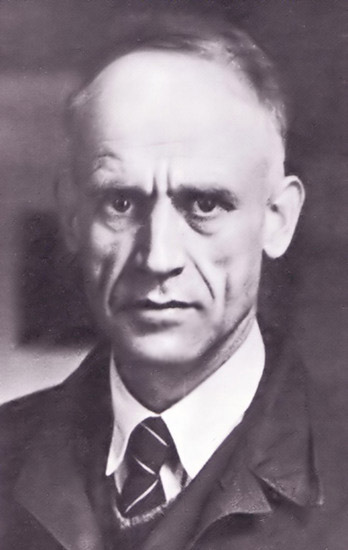
During his imprisonment he painted the portraits of numerous American officers. In Goettingen he was reunited with his wife and three children, who had been evacuated from Berlin in the last days of the war. His house had been plundered, and the greater part of his work stolen or destroyed. During 1946 and 1947 he tried to resume earning a living as an artist, despite steadily worsening health. He managed to complete a three panel anti-war painting for his former high school; and began an autobiography ("Aus Freude am Schoenen"), which was only completed by his wife Charlotte in 1987. On the 18th of October, 1948, after a months long hospital stay, he died of cancer.
A selection of postcards made from the drawings by Wolfgang Willrich











